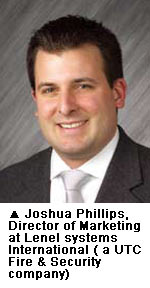The Columbine High School tragedy in the U.S. a decade ago put campus security into the international spotlight. Since then, violence and massacres have continued to plague schools worldwide, resulting in high demand for advanced security measures. A&S takes a look at the latest technologies and strategies to protect high-value assets on campus today.
The Columbine High School tragedy in the U.S. a decade ago put campus security into the international spotlight. Since then, violence and massacres have continued to plague schools worldwide, resulting in high demand for advanced security measures. A&S takes a look at the latest technologies and strategies to protect high-value assets on campus today.
Academic institutions nurture valuable assets — researchers and students. Many research breakthroughs take place at universities, which are large and open to public, making security complicated.
The No. 1 priority is incorporating security into facility design and raising s awareness, as crime prevention cannot rely completely on security equipment. The location of a campus and that area's vulnerability, determine its security implementation and emergency plans, said security consultant Jeff Fields, PSP, CHS III.
If the campus is located near a nuclear plant, terrorist attacks and chemical leaks need to be considered. A prison built within 30 miles from a school may increase crime rates or raise security concerns for campus residents. If crime prevention plans are properly executed, risks can be reduced, Fields said.
 Campus Safety
Campus Safety
Access control is critical to campus security. ID cards, logical/physical access control and emergency notification are all important and in everyday use, said Joshua Phillips, Director of Marketing at Lenel Systems International (a UTC Fire & Security company).
ID management refers to a single credential propagated across physical security, logical security and business systems, which enhances accuracy and reduces cost, said James O'Brien, Security and Fire Safety Solutions, Regional Enterprise Sales Manager for Central, Johnson Controls.
 More integrated command centers converging data from physical security, building management and other systems help reduce nuisance alarms, simplify assessments and execute effective responses, O'Brien said.
More integrated command centers converging data from physical security, building management and other systems help reduce nuisance alarms, simplify assessments and execute effective responses, O'Brien said.
Research Facilities
University environments are diversified, as seen in research facilities. Unlike dedicated commercial research facilities, campus research facilities house a mix of laboratory space, classrooms, lecture halls, offices and common areas. Controlling access is an important for campus safety and high-value research.
There are many types of research facilities — biochemical, medical, animal and more. With expensive equipment, research can involve experiments that could be threatened by terrorists and animal rights extremists.
 The cost of securing a research facility varies, depending on how much security is needed and the research result. A typical facility costs around US$5,000, which includes a DVR, four cameras, access control points with fingerprint identification and integrated intrusion detection with panic buttons, said Hyuk Byung Lee, Regional GM and VP of Sales and Marketing for CMS in APAC, ADT Korea.
The cost of securing a research facility varies, depending on how much security is needed and the research result. A typical facility costs around US$5,000, which includes a DVR, four cameras, access control points with fingerprint identification and integrated intrusion detection with panic buttons, said Hyuk Byung Lee, Regional GM and VP of Sales and Marketing for CMS in APAC, ADT Korea.
"Destruction of facilities by fire tops the list of concerns for universities, especially for laboratories which are frequently exposed to explosions, short circuits or electricity leakage," Lee said. "Video surveillance is a must to monitor the facility and protect evidence."
 Protecting Equipment
Protecting Equipment
Research facilities must secure physical assets such as state-of-the-art technologies, valuable specimens, high-end computing resources and classified or proprietary documents, said Gadi Piran, President and CTO at OnSSI.
Doors can be secured with electronic locks and keypads. The access control system must offer audit trails to monitor who has been about and at what time, said Beverly Vigue, VP for Education Markets at Ingersoll Rand Security Technologies.
Presenting multiple credentials and biometric verification is crucial, said Barbara Winkler-Chimbor, Director of the Education Vertical for North America, Genetec. Hand geometry and fingerprint readers verify a person's identity, providing added security for data and equipment. For some level-three facilities, two-person verification is required.
 Video surveillance systems with intuitive user interfaces provide instant control, analysis, delivery and response, Piran said. Operators can remotely access cameras at multiple sites through a map-based interface.
Video surveillance systems with intuitive user interfaces provide instant control, analysis, delivery and response, Piran said. Operators can remotely access cameras at multiple sites through a map-based interface.
Automatic license plate recognition protects campuses. Parking lot monitoring can match license plates against a list of stolen vehicles, sex offenders or other unwanted visitors, for proactive detection of possible incidents, Winkler-Chimbor said.
Public Safety
Protecting the health and lives of scientists and employees is a top priority for  security plans, said Roni Klein, VP of Sales for APAC, Verint Systems.
security plans, said Roni Klein, VP of Sales for APAC, Verint Systems.
Radioactive substances, such as uranium and plutonium or infectious pox samples, require higher security.
Access control prevents unauthorized access to these substances, crucial for public safety. Administrators can manage the facility with complete access records and prevent information leakage, Lee said.
Regardless of the level of protection, the impact on occupants and the environment must be considered in a total project context, Klein said.
The San Diego State University's Homeland Security Program and its Immersive Visualization Center (SDSU Viz Center) use network video and command-and-control software for a total solution. This integrated system can prevent the illicit transport of radiological materials that could be used to make dirty bombs, Piran said.
Challenges
The main challenges for campus security are lack of funds for more advanced security systems for the vast areas it needs to monitor. Facing the global economic downturn, universities and research facilities are feeling its impact to varying degrees.
While the IP trend is growing, many universities  built 30 years ago still have analog systems in place. Even when a new building's security needs can no longer be satisfied by existing analog systems, budgetary constraints are next to insurmountable, Fields said.
built 30 years ago still have analog systems in place. Even when a new building's security needs can no longer be satisfied by existing analog systems, budgetary constraints are next to insurmountable, Fields said.
On the other hand, some universities have funds to protect ongoing projects. For example, IKON Marketing Consultants reported that the education segment in India is growing. Private-equity firms are estimated to invest roughly $200 million in the Indian education sector, boosting the need for more security, Klein said.
Universities can be difficult to secure, as many parties compete for control and dilute the effectiveness of a master security plan that often encompasses countless buildings, entrances, parking lots, laboratories and recreational facilities. Although integrated security systems require planning and funding to realize, they are a trend to bring disparate interfaces into a unified one.